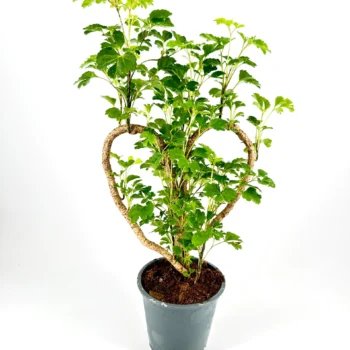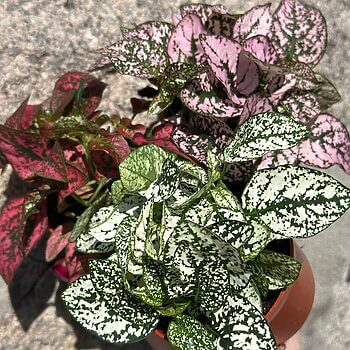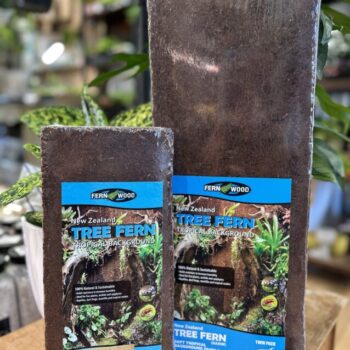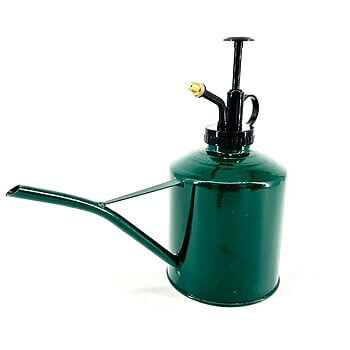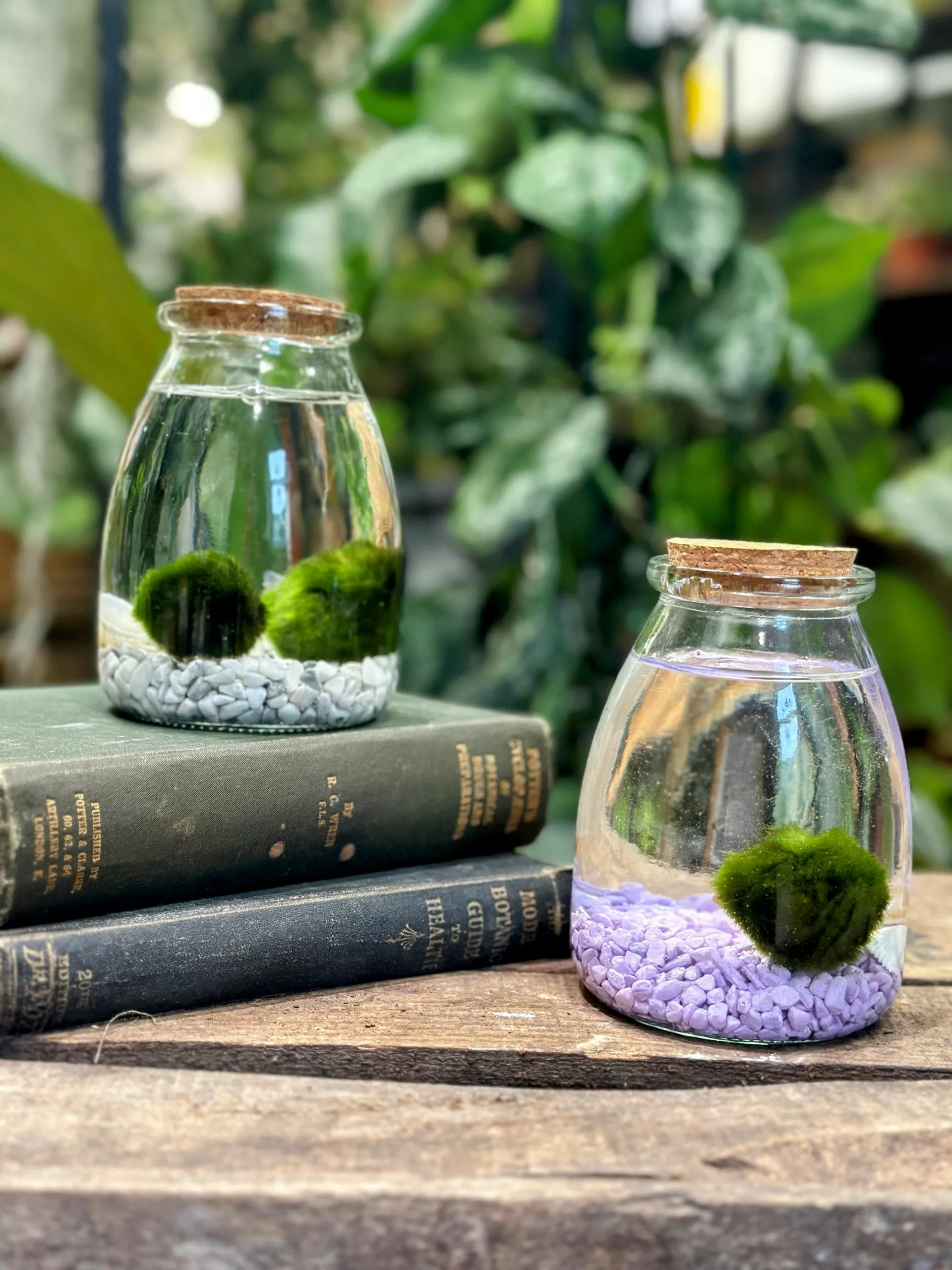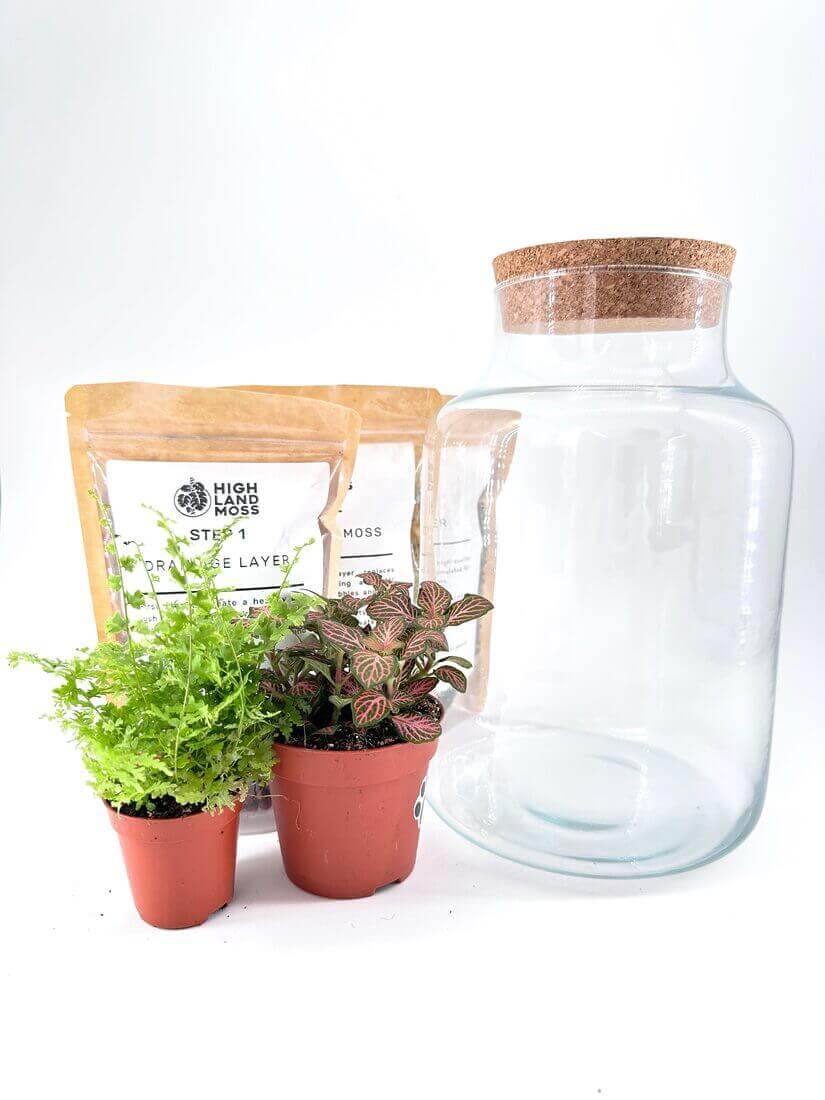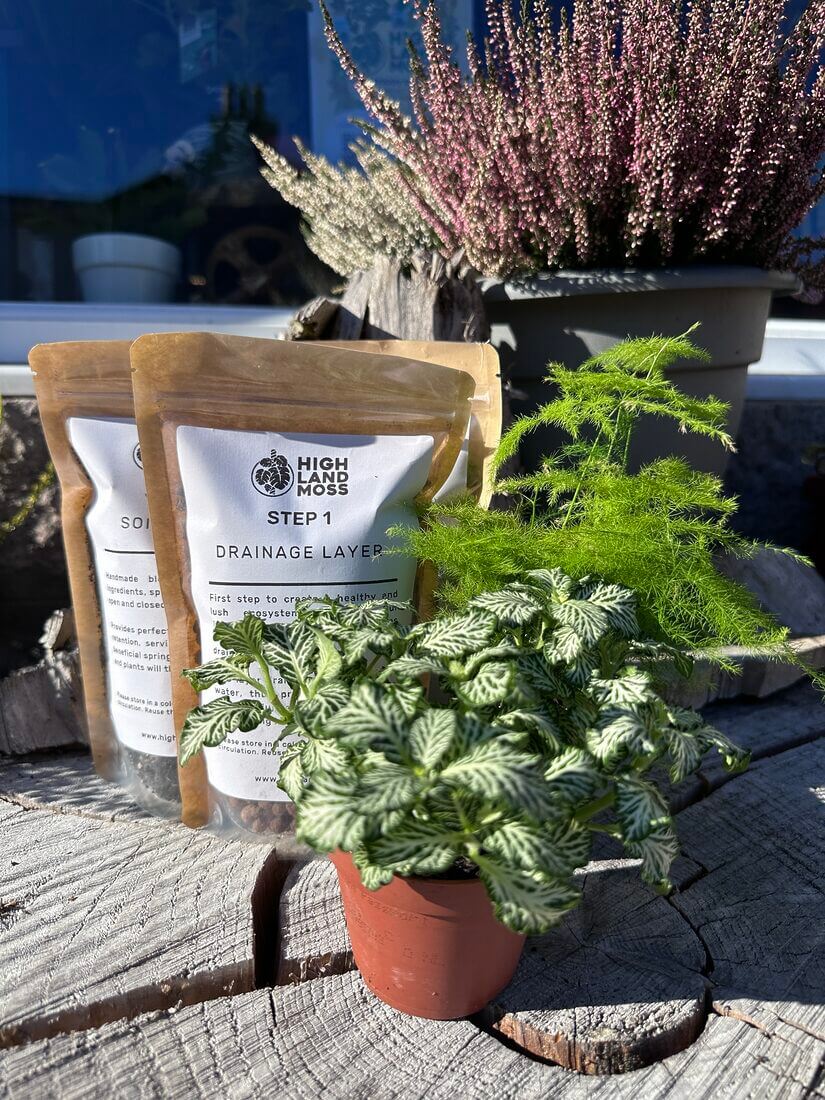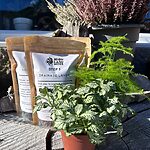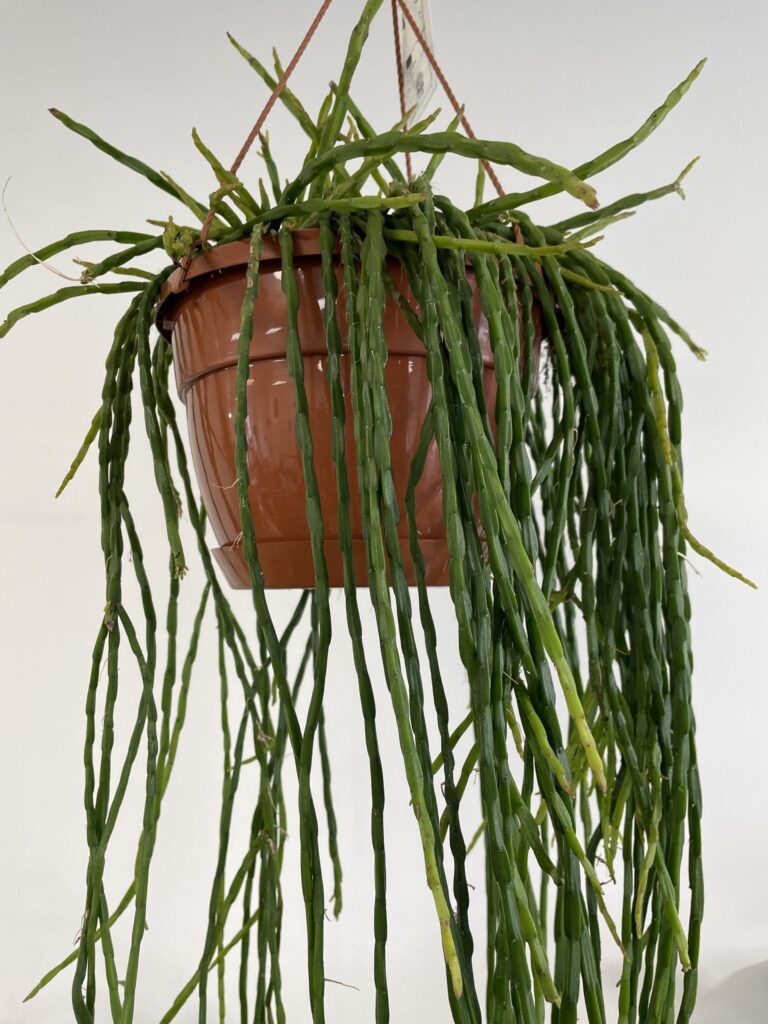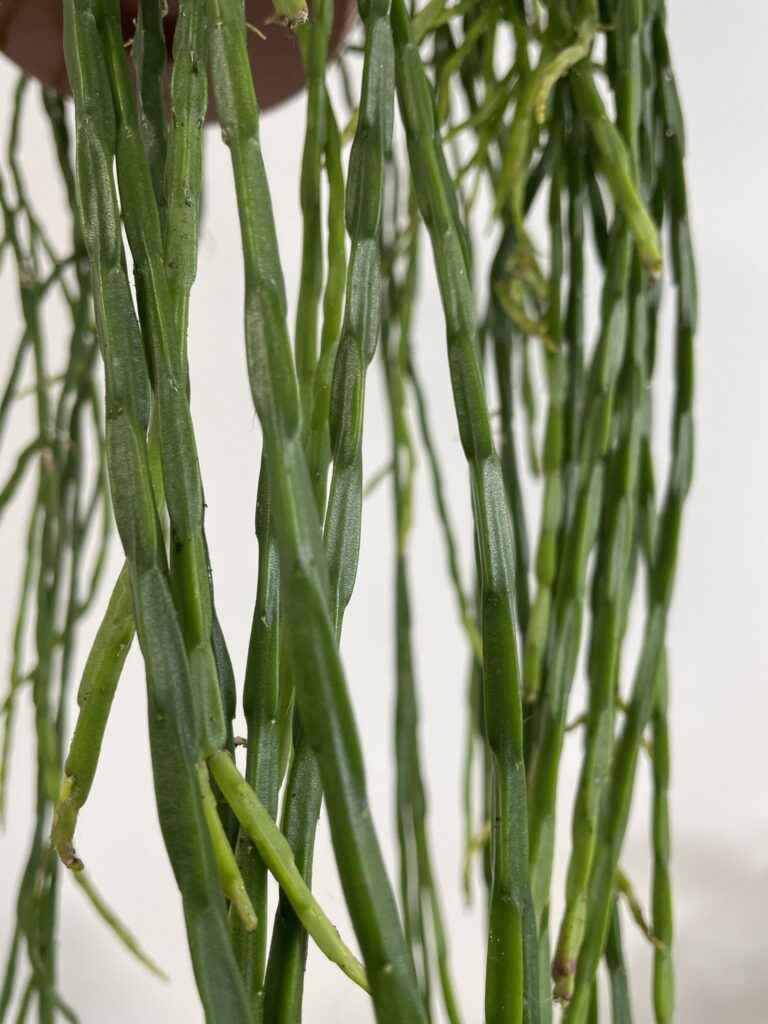- About
- Light
- Humidity
- Water
- Soil
- Pest & Diseases
- Feed
- Pruning & Propagating
- Repotting
- Troubleshooting & Tips
- Toxicity
- Species
- Rhipsalis Paradoxa
- Opuntia
- Pachycereus pringlei
- Schlumbergera
About
Cacti have become fan favourites in the houseplant world, so much so they have developed their own cult following. While for many of us, we may have a Cacti or two amongst our collections there are many people who have completely fallen in love with them and have filled their homes with these unconventional beauties.
These plants are the pinnacle of a drought-resistant plant, with their many adaptions to live in areas of little to no rainfall, it has led them to be a very successful species. There are approximately 1800 different known species of Cactus that spread across 127 different genera that all belong to the family Cactaceae. They spread across and inhabit a broader spectrum of environments than you may think. While predominantly found in extremely hot and dry environments in the north and south of America, with the most concentrated areas of species being found in Mexico, southwestern United States, Peru, Bolivia, Argentina, eastern Brazil and coastal and mountainous regions of southern Brazil. There is also a selection of Cacti that thrive in more humid environments where they tend to grow as epiphytes (a plant that grows on top of another plant).
Cacti across the board have formed many adaptions in order to survive the harsh environments that they inhabit and have developed some interesting and unique traits to be able to conserve and store water.
Unlike most plants that photosynthesise through their leaves, most Cacti have lost their true leaves and have found great efficiency in photosynthesis through their large fleshy trunk. The trunks are often ribbed and fairly flexible, which allows them to expand and contract. While they are slow growers they are not slow to react, being able to quickly absorb water during rainfall. Some of the tallest and most mature Cacti can absorb up to 800 litres of water from a single rainstorm. The trunk expands, allowing as much water as possible to be stored. As time goes on and when the water is used the trunk will contract back to its original size.
Cacti have also developed a shallow root system to aid them in collecting water, instead of growing deep into the ground, most Cacti have shallow horizontal spreading root systems. This allows them to absorb rainwater that reaches the ground as quickly as possible.
The most notable adaption, which as houseplants can prove more of a hazard than a joy at times, is their spines. These come in all different lengths, types and degrees of viciousness. Most spines are straight or slightly curved but fall into the categories of needle-like, bristle-like or hair-like. While can all cause some damage when contact is made, some are much worse than others. Hair-like spines come off with the gentlest of touches and can prove very difficult to remove and leave behind itching and irritation to the skin. Needle-like spines are often out for blood and very quickly penetrate the skin. Albeit not the most convenient for us keepers of domestic Cacti this adaption does serve a very important purpose. The most valuable benefit to the Cacti that the spines provide is a touch of shade but they also reduce airflow to the surface of the Cacti which helps to prevent water loss, this can be crucial to the survival of the plant over many years. But as expected their spines serve a great purpose in protecting from small animals and birds that have learnt of their usefulness as a water source in the middle of a desert.
Overall Cacti come in all different shapes and sizes and are a joy to watch grow. They are a plant that can be kept for life, if well looked after, and have the potential to grow and grow to reach impressive sizes even when kept indoors. Pick your Cacti carefully and once you have learnt the tips and tricks to help them to flourish they’ll soon become a go-to choice for a new member of your plant community.
Light
Bright light is a necessity for almost all Cacti with only one or two exceptions. But as a general rule, your Cacti will need to be placed in the brightest, sunniest spot possible. These plants love direct sunlight and will require at a minimum at least four hours a day.
It is important to regularly rotate your Cacti to make sure it gets an even spread of sunlight, around once a month should do the job. This will help to keep your Cacti growing uniform because, like many succulents or light-loving plants, they will naturally grow towards the light. But this will also help to protect the Cacti as sunlight is amplified as it passes through windows and concentrated amounts of direct sunlight over time can cause damage and colour fading to the plant.
More tropical and humidity-loving Cacti like Christmas Cactus for example will prefer a slightly shadier location with less direct sunlight. It’s best to find out what environment your Cacti naturally live in before settling on a permanent home for it amongst your other plants
Humidity
Overall humidity levels shouldn’t really be too much of a worry. Almost all Cacti will happily perform in the average household humidity (40%) or lower. During the hottest parts of the year, they may thank you for a slightly higher humidity, around 50-60%, but as long as they receive an adequate amount of water it is not essential.
Water
Cacti are famously known for not needing too much water but this can be a dangerous assumption to go by during the warmer months when your Cacti will be doing all their growing.
Cacti will likely spend the majority of their time in dormancy. When the temperature drops and the days are very short during the Autumn and Winter your Cacti will need next to no water for this whole period of time. It is always encouraged to let the soil completely dry out between watering but during dormancy, this can go on for an extended period of time. It may only require a very small amount of water every six to eight weeks.
It is during the spring and summer when Cacti often go underwatered. While they are actively growing these plants can go through more water than you think and getting this schedule right can be the difference between a good growth spurt and no growth spurt at all. It is still important to allow the soil to fully dry out between watering but when placed in a sunny spot with the right amount of direct sunlight you could find yourself watering your Cacti once every couple of weeks.
Soil
Cacti will need to be placed into sharply draining soil to have any chance of survival, the soil needs to be relatively loose to allow for good drainage and aeration of the roots. It is always best to use a specific Cacti compost as this has been specially formulated to recreate the ideal conditions for your plant.
You could still use regular potting soil but you would have to add a mixture of sand, perlite and grit in order to increase the drainage and allow a good environment for the root system to thrive.
Pest & Diseases
Even though Cacti plants are fairly robust they still suffer from pests, and the chance of them making an unwelcome appearance is still very possible.
It is good practice to regularly check your plants for any signs of aphids, red spider mites, mealy bugs, and thrips. You may notice some signs of distress but by checking regularly you allow yourself time to prevent a full-blown attack.
The most common problem for Cacti is fungal diseases that are caused by overwatering. These can be a precursor for other pests as they tend to attack when the plant is already in a weakened state.
Mealybugs and scale are the two most common pests as they can sit comfortably amongst the spines on the surface of Cacti. Both of these pests can be highly damaging to the plant and can go on to cause a complete collapse if not dealt with quickly.

Check our video on homemade pest remedies or head over and read are Fungus Gnat Fact Check and Home Remedies how to guide
Feed
The feed can make a huge difference to the growth of your Cacti but it can also be its downfall. Making sure you use the right kind of feed in the right quantities at the right time will be crucial in making sure you dont cause more harm than good to your Cactus.
The feed needs to be low in nitrogen and high in phosphorus, the best decision is to get a Cacti-specific feed that will already have the balance of the right nutrients in order to thrive and aid growth. It is also important to note that feed should only ever be applied when your Cacti are actively putting on growth, any other times can cause damage to the root system and plant.
Pruning & Propagating
In general, Cacti don’t need to be pruned, their growth is often too precious and formed over many painstaking months to warrant trimming it back. The only time you may prune some of your Cacti is when removing damaged or diseased growth.
Ensure to always wear thick gloves and use sharp cutting utensils that have been disinfected!
If your Cacti produce offshoots and pups then you’re in for a chance of propagating your plant. While not the easiest plants to propagate it can definitely be the most rewarding. You will also be helping the mother plan by removing pups and offshoots, they will draw on water and nutrients from the mother plant in order to survive.
The best time to propagate Cacti will be in the spring to give the propagation material the best chance of survival. You’ll need a good thick pair of gloves, sterilised cutting utensils, cactus potting mix, and the smallest pots possible to house the cutting material. It can often help to have some rooting hormone as well but it is not essential.
Start by removing the pups or offshoots, and make sure to make a clean cut, this will help to lower the chance of infection from the open wound.
Once you have your cutting materials they will need to be placed somewhere dry and bright in order to callus over. It is best to let the pup or offshoot sit for up to a week or more.
After the wound has healed over they can be placed into small containers of cacti compost. If you are using a rooting hormone to increase the chance of the prop material taking, dip the material into the powder before placing it into the pot.
Place the Cacti in the pot somewhere with the highest level of bright indirect sunlight and mist regularly making sure the compost doesn’t dry out completely to dust.
In around six weeks the Cacti should develop a strong root system and should be able to be moved up to a slightly larger pot.
Repotting
It’s best to re-pot your Cactus once the roots fill its pot. This task can often be neglected due to the inherent difficulty of the task but it will be essential in order to aid healthy growth and development. On average your Cacti will need to be repotted every two to four years. If you feed your Cacti regularly throughout the growing season they will need to be repotted less frequently.
If your Cacti are particularly vicious and spiney it may be best to wrap them up with newspaper and cardboard to protect both you and the spines from any mishaps. It is also always best to use terracotta pots as this allows more aeration to the root system and provides an extra measure to absorb excess moisture from the soil.
Before transferring your Cacti to a new pot it’s worth checking over the root system and trimming off any dead or damaged growth. The best way to do this is to allow the root system to air for two or three days before placing it into its new pot. This will allow you to see damaged and deads root much easier and reduce the risk of infection.
The best time to repot your Cacti is when spring arrives. Outside temperatures will rise and the daylight hours will increase. When this happens your plant will react quickly to the environmental change and start producing lots of new growth.
You will need to pick a terracotta pot with excellent drainage, we don’t want water hanging around the roots.
Next, fill a third of the way up with a Cacti potting mix(insert link). Place the root ball of the plant in the centre of the pot.
Fill with the remaining soil and gently firm down around the root ball.
When you’ve finished and got your plant back in the perfect spot, wait a couple of days and then thoroughly water it to settle the plant into its new pot. Keep a close eye on it for the first couple of weeks and then relax back into your normal watering and feeding schedule.
Troubleshooting & Tips
- Your Cacti will love to be outside in the summer, the extra airflow and prolonged sunlight will help to give a big boost to their growth for that season. This will also help to encourage flowering as Cacti need warmer daytime temperatures and cooler nighttime temperatures in order to create a successful bloom.
- Take extra care during the winter months when your Cacti are in dormancy this is one of the most common times to overwater your plants and cause them to fail.
- Don’t underwater your Cacti in the summer months. If you have your Cacti in a sunny and hot location they will need regular watering to perform well.
- Only feed your Cacti when it is actively putting on growth, all other times are likely to cause damage to the plant.
Toxicity
As a rule, you should always be very cautious around Cacti, their spines can be dangerous enough. But often Cacti will cause irritation and itching when they come into contact with the skin, some worse than others. There are also certain varieties that will be toxic if ingested so always best to keep them out of the reach of children and animals.
Species

Opuntia
Opuntia, commonly known as prickly pears, are you will come across often in the cactus sections of houseplant shops. The easy care Cacti are known for their bright green flat stems with a yellow tint from their rather annoyingly viciously hair-like spines. A great Cactus for beginners, if well taken care of this plant will just keep growing and growing.
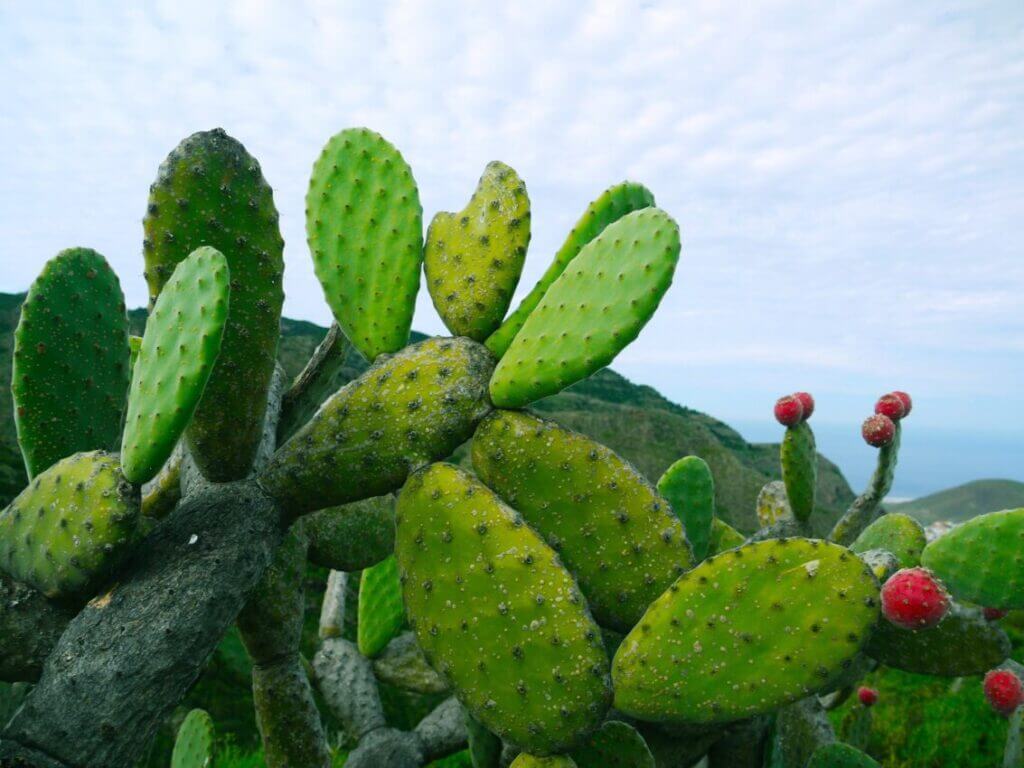

Pachycereus pringlei
You might class these as the stereotypical cactus and where your mind goes when you picture are spike friends. These cacti form tree-like structures with multiple stems of just a single stem which is more likely as a house plant. They have gorgeous dark blue to green stems and grey protruding spines.
Schlumbergera
This has to be one of the most popular Cactus and has been that way for a long time. The Christmas Cactus has been adored for decades with its gorgeous blooms of vividly bright pink and beautifully shaped flowers. This Brazilian forest-dwelling cactus blooms in winter giving it the name Christmas cactus and is often a sign of new hope for the new year.
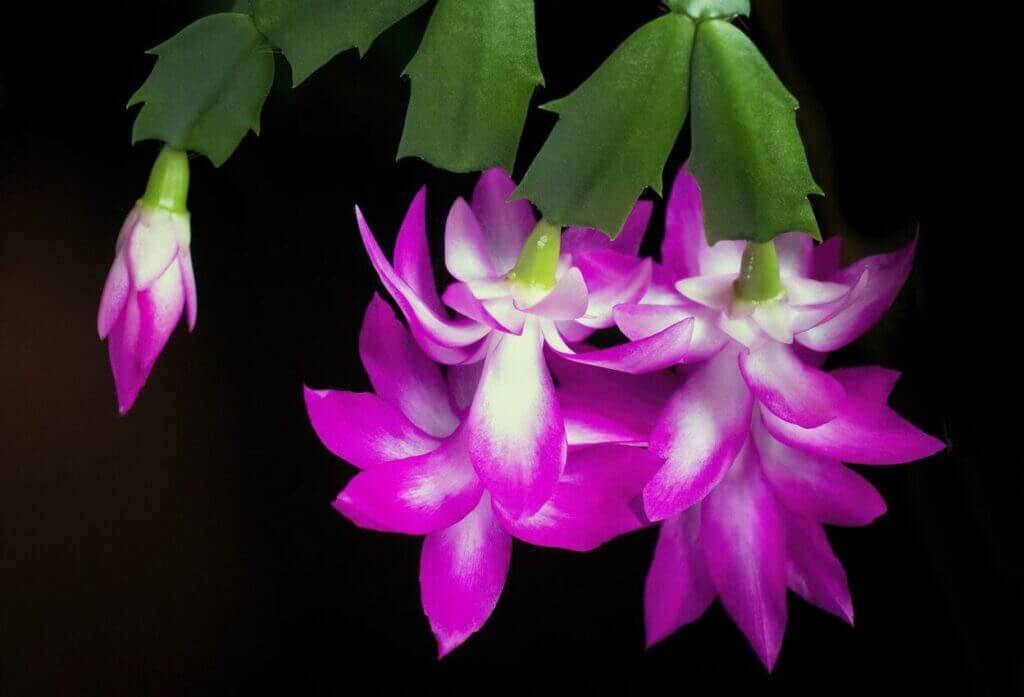
If you enjoyed this guide head over to Articles & Blogs to learn more or check out our YouTube for even more useful information!




